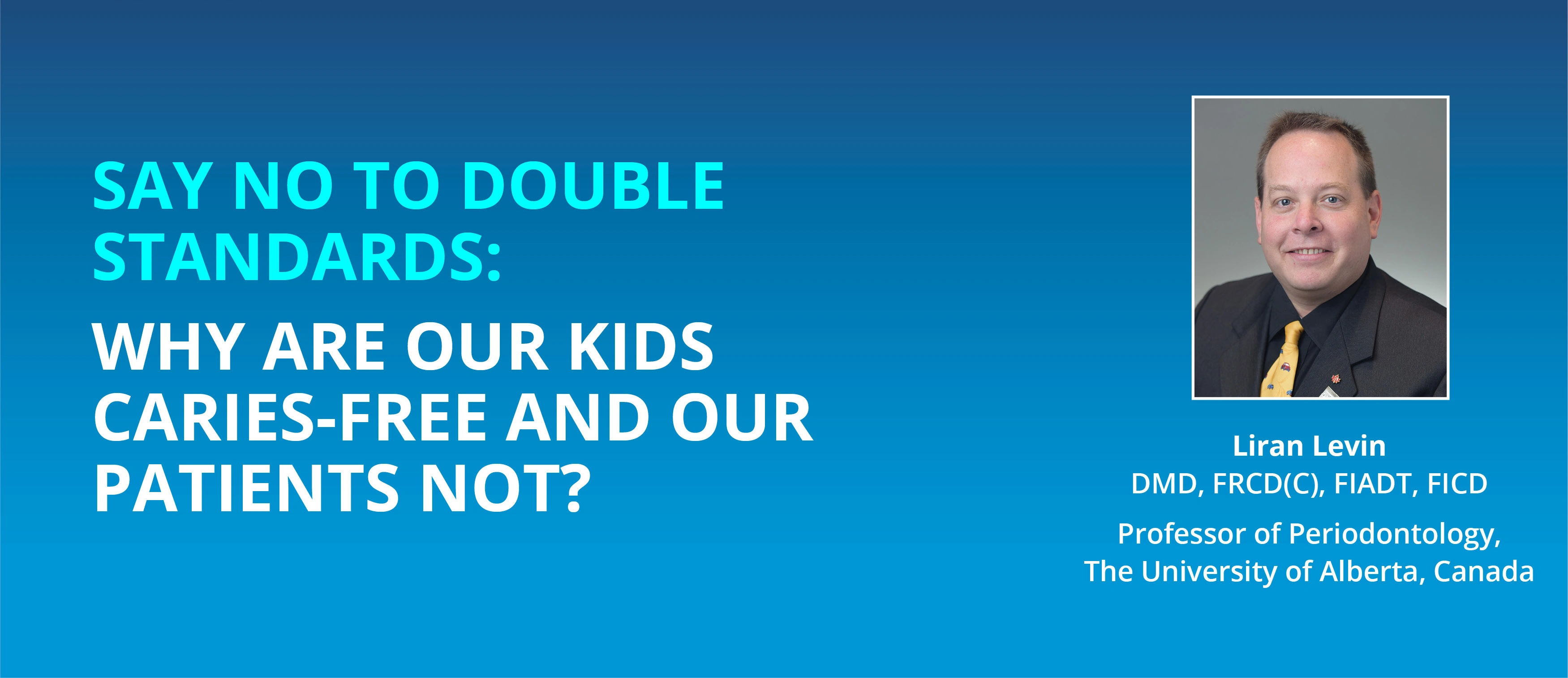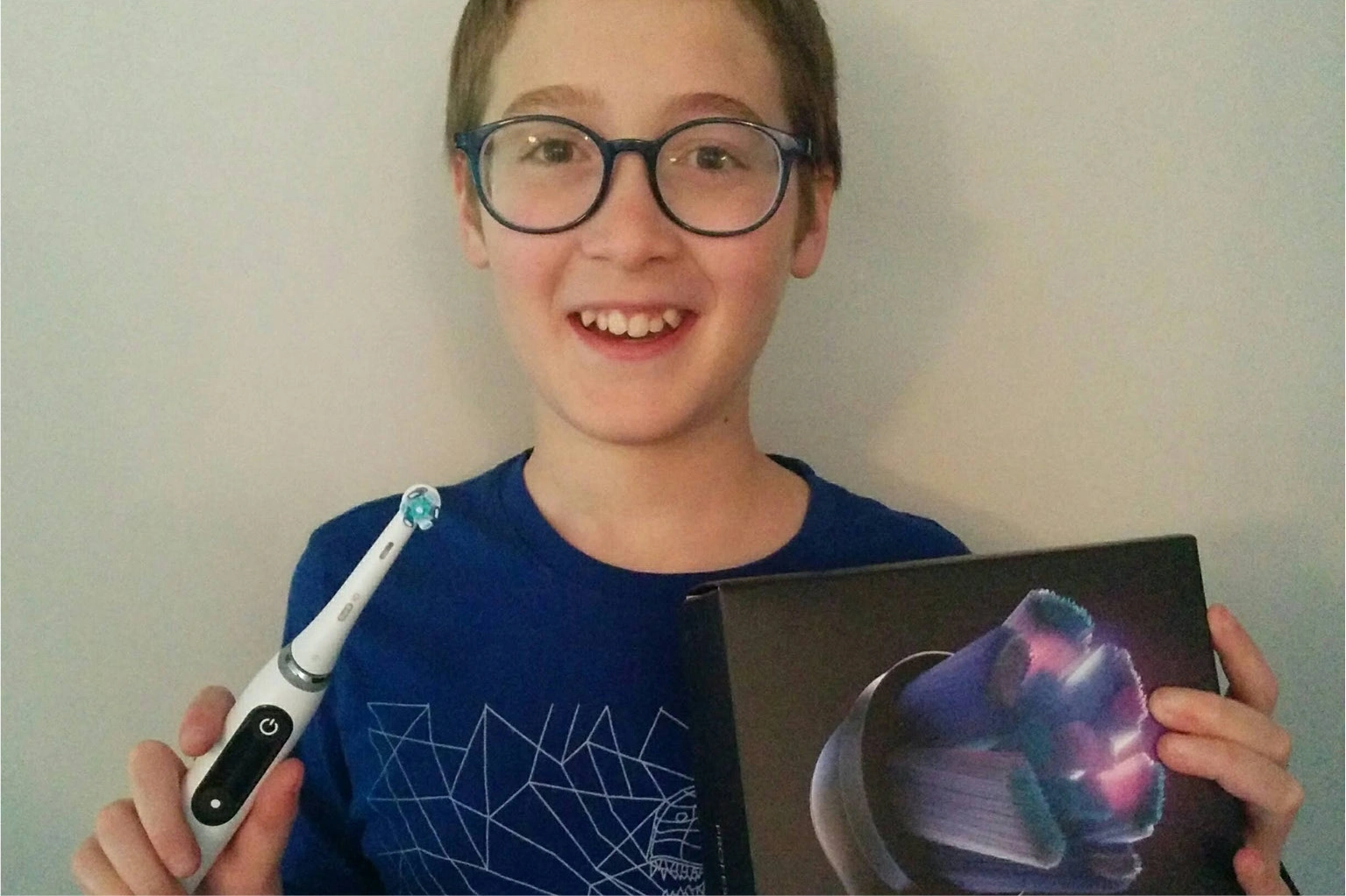Say No To Double Standards
Caries and periodontal diseases are still among the most prevalent conditions worldwide.1 The main cause for these two oral diseases is bacterial plaque biofilm.2 There have been tremendous improvements during the last decades with regards to treatments and especially materials used to treat caries and periodontal disease. However, when it comes to prevention of the disease, it seems that we, as the dental profession, are not doing enough to eradicate or to dramatically reduce the burden of oral diseases. Both caries and periodontal disease are almost totally preventable by proper home care and plaque control together with some other habits. It seems, sometimes, that we are so focused on treating the diseases that we cannot think or act properly to eliminate them.
Oral Disease Prevention
In order to understand how well we can prevent the development and progression of oral diseases, we can take a look at our own children. Most of our kids are caries-free and do not suffer from periodontal diseases at all.3 This means that we are well aware and equipped to totally prevent these oral diseases when it comes to our precious ones, so why can’t we do the same with our patient population and with our communities. Education for prevention of oral diseases should start at a very young age but can continue throughout life. Making sure that our patients, their family and our community are doing the right job to maintain healthy mouths is an important component of our duty as individuals and as a profession. We should continue with the efforts and invest the needed time and resources to create a healthier generation in terms of oral infections. We should educate for proper home care using the proper tools in the proper way.
Making Evidence-Based Recommendations
An example for that could be the time and effort we invest in educating our kids to clean their teeth and change bad habits, while we are not investing the same proportion of time and efforts to do so with our patients. Another example would be using innovative and beneficial technologies such as the electric toothbrush. In some recent surveys, 86% of dental professionals indicated they recommend power toothbrushes as the best tool for daily plaque removal.*
This recommendation is also in line with the evidence that showed that oscillating-rotating (O-R) powered toothbrushes demonstrate more plaque removal and reduce the number of bleeding sites better than other powered toothbrushes.4 Subjects with localized or generalized gingivitis had 7.4 times better odds of transitioning from gingivitis to a healthy state after using an electric O-R brush versus a manual brush.5 Moreover, electric toothbrush users showed significantly lower progression for mean probing depth (22.0%), clinical attachment loss (21.0%), tooth loss (20%), and decayed/missing/filled surfaces (17.7%) compared to manual toothbrush users.6
Rethinking Practice Routines
However, while personally using and sometimes recommending power brushes to patients, practice routines continue to provide manual brushes to patients during their dental hygiene appointments. Maybe we should preach what we practice more, especially in our daily practices. If we know there are better tools that can help our patients in their efforts, like an electric toothbrush or some interproximal cleaning aids, we should recommend it and show them how to properly use it. We should always look for the best available evidence for our recommendations as well.
We need to be more proactive and intentional as a profession in advocating for prevention and eradication of dental and oral diseases. It might seem like an unachievable goal sometime, but as we see with our own children, it is indeed doable and with passionate conviction, daily work with our patients, their families and our communities, we can make it happen. Starting in our own offices, let’s try harder together as a community and say no to double standards.
*Canadian Dental Professionals Usage & Recommendation Study, Direction Research, April 2019.
References:








